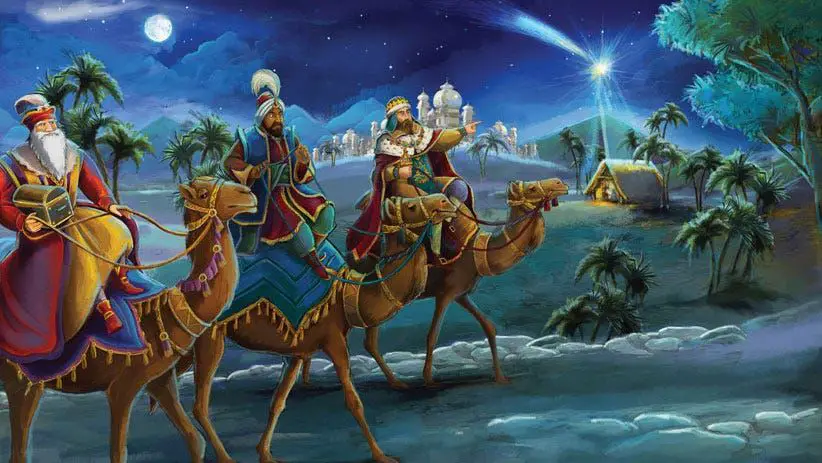What Is The 12 Days Before And 12 Days After Christmas?
The 12 days before Christmas and the 12 days after Christmas mark a festive Christian season celebrating the birth of Jesus Christ. While primarily associated with religious observances, the period has also become part of secular celebrations and folk traditions. This 25-day period starts on December 25th – Christmas Day – and ends on January 6th – known as Epiphany or Three Kings’ Day. The 12 days leading up to Christmas are sometimes referred to as the 12 days of Advent, while the 12 days following Christmas are known as the Twelve Days of Christmas. Though the exact origins and meanings behind the tradition vary, it generally serves as an extended holiday season of feasting, celebration, gift giving and spending time with loved ones. The 25-day period provides an opportunity for reflection on the themes of Christmas – joy, generosity, peace, and faith.
History
The tradition of the 12 days before and after Christmas dates back to the 4th century when Christians first established the dates of the Christmas holiday. In early Christianity, the Feast of the Nativity commemorated both Jesus’ birth and his baptism which was originally celebrated on January 6. The church eventually separated the two events, placing Jesus’ birth celebration on December 25 and his baptism on January 6 (known as Epiphany).
The 12 days between these two feasts became known as the 12 Days of Christmas. The earliest recorded celebration of the 12 days dates back to 567 AD from the writings of the medieval monk St. Eligius. By the High Middle Ages, the 12 Days of Christmas had become established as a recognized religious and festive season throughout Christendom. Many Christian traditions, rituals and practices developed during this period including gift giving, pageantry, feasting and merrymaking.
Historically, the 12 days were a time of celebration, hospitality and charity. Churches held feasts honoring saints and special masses. The wealthy were expected to open their homes to servants, tenants and the poor during this season. The tradition reflected Christ’s statement that “whatever you did for one of the least of these brothers and sisters of mine, you did for me” (Matthew 25:40). Overall, the 12 days provided a time for Christmastide celebrations before returning to ordinary routines.
The 12 Days Before Christmas
The 12 days before Christmas originally referred to a series of religious feast days celebrated in medieval and Tudor England as part of the Roman Catholic tradition. According to Wikipedia, these 12 days led up to Christmas day on December 25th. Each day had a specific meaning and associated traditions.
December 13th was Saint Lucy’s Day, honoring a young Christian martyr killed in 304 AD during the Diocletianic Persecution. A festival of light was held in her honor, with candlelit processions and girls dressed as Saint Lucy in white robes with wreaths of candles on their heads.
December 21st marked Saint Thomas Day, commemorating the Apostle Thomas. A tradition involved poor women going door to door begging for food and other donations, which were then distributed to the needy on Christmas Eve.
December 24th was Christmas Eve, beginning the fast leading up to the Nativity of Jesus on Christmas Day. Traditions included decorating homes with holly, ivy, mistletoe and other evergreens. Churches displayed nativity scenes and held midnight mass services.
The 12 days before Christmas served to build anticipation and prepare spiritually for the coming of Christ on Christmas Day. The traditions and symbolism infused each day with meaning.
December 25 – Christmas Day
December 25th, Christmas Day is the traditional celebration of Jesus’s birth. According to the Encyclopedia Britannica (Source), the Church settled on December 25th for Christmas in order to Christianize the existing pagan midwinter festival of Saturnalia. By celebrating Christ’s birth on December 25th, the Church was able to provide an alternative to the pagan celebrations during the winter solstice.
For billions of Christians worldwide, Christmas Day is the biggest celebration of the year. It commemorates the birth of Jesus Christ in Bethlehem over 2000 years ago, as described in the Gospels. Families attend church services, exchange gifts, decorate Christmas trees, attend parties, and feast on traditional Christmas meals. Many churches hold special services on Christmas Eve and Christmas morning. Popular Christmas carols are sung and nativity plays depicting the story of Jesus’s birth are performed.
December 25th is a public holiday in many countries so people can celebrate freely. Major cities like London, New York and Rome are beautifully decorated with lights and ornaments during the Christmas season. Gift giving, family gatherings, and acts of charity are central to the Christmas spirit. Overall, Christmas Day represents a joyous occasion to celebrate faith, values, peace, and the spirit of giving.
The 12 Days After Christmas
The 12 days after Christmas are the 12 days that make up the Christmas season in the Catholic tradition. They start on December 25 (Christmas Day) and end on January 5 (Twelfth Night).
These 12 days represent the time between the birth of Jesus Christ and the visit of the Three Wise Men (also known as the Magi or the Three Kings). Each day has a meaning and associated traditions:
- December 25 – Christmas Day – Celebration of the birth of Jesus Christ.
- December 26 – Feast of St. Stephen – Commemoration of St. Stephen, the first Christian martyr.
- December 27 – Feast of St. John – Commemoration of St. John the Apostle.
- December 28 – Feast of the Holy Innocents – Commemoration of the infants massacred by King Herod.
- December 29 – Fifth Day of Christmas
- December 30 – Sixth Day of Christmas
- December 31 – Seventh Day of Christmas – New Year’s Eve.
- January 1 – Octave of Christmas – Circumcision of Christ.
- January 2 – Ninth Day of Christmas
- January 3 – Tenth Day of Christmas
- January 4 – Eleventh Day of Christmas
- January 5 – Twelfth Night – Commemoration of the Three Kings visiting infant Jesus.

Common traditions during the 12 days after Christmas include attending church services, singing Christmas carols, keeping decorations up, giving to charity, and spending time with loved ones. The season culminates with Epiphany on January 6, celebrating the manifestation of Christ to the Gentiles.
January 5 – Twelfth Night
Twelfth Night on January 5 marks the twelfth and final night of the Christmas season. It has been a time of celebration dating back to medieval times in England, when Christmas was a raucous 12-day celebration ending on Twelfth Night (https://www.bpl.org/blogs/post/the-origins-and-practice-of-holidays-twelfth-night-gurpurab-guru-gobindh-singh-epiphany-dia-de-los-reyes/).
Twelfth Night was traditionally a time to celebrate with feasting, drinking, dancing, and general revelry. Some key traditions associated with Twelfth Night celebrations include:
- Taking down Christmas decorations – it was considered bad luck to keep decorations up past Twelfth Night.
- Eating a Twelfth Night cake – these were often bean cakes with a bean and pea baked inside, and whoever found the bean and pea in their slice was named King and Queen of the festivities.
- Wassailing – the ancient tradition of visiting neighbors and friends, singing and offering a drink from a wassail bowl containing hot cider or ale.
- Performing plays and pageants – it was common to act out pageants and plays on Twelfth Night, especially ones focused on the Biblical stories of the Three Kings.
In modern times, Twelfth Night is still celebrated in some regions with feasting and merriment, though not as rambunctiously as in medieval times. It remains a time to enjoy the end of the Christmas season and the approaching new year.
Regional Variations
There are some notable regional differences in how the 12 days before and after Christmas are observed:
In the UK and Ireland, the 12 days after Christmas are considered more important. The 12th day of Christmas, January 5th, is called Twelfth Night and it marks the end of the Christmas season. In England, Twelfth Night was traditionally a night of feasting and festival.[1]
In Spain and other Latin American countries, the 12 days before Christmas are emphasized more. These 12 days, from December 13-24, make up Las Posadas, a celebration commemorating Mary and Joseph’s journey to Bethlehem.[2] People reenact their search for shelter through processions and parties.
In France, the period between December 25 and January 6 is called La Fête des Rois (“Celebration of the Kings”). Children leave their shoes by the fireplace to be filled with gifts from the three kings. The feast day of January 6 marks the official end of the Christmas season.
In Italy, January 6 is observed as the Feast of the Epiphany. It commemorates the arrival of the magi to honor the newborn Jesus. In some Italian regions, children wait for La Befana, a friendly witch, to deliver sweets and gifts on the eve of January 6.
Modern Observances
In modern times, the 12 days of Christmas are celebrated in various ways, though not as extensively as in medieval times. Many churches hold special services and events starting on December 25 and continuing through January 5. Christmas celebrations typically culminate on Epiphany, January 6, which commemorates the visit of the Magi to the baby Jesus. In some places, Twelfth Night on January 5 is celebrated with parties, feasting, and the taking down of Christmas decorations. The 12 days are also often counted down during the Christmas season with special Advent calendars that have a little gift or treat for each of the 12 days.
While not observed as extensively anymore, the 12 days of Christmas serve as an important part of the Christmas season. The time period helps Christians reflect on and celebrate Jesus’ birth and the visit of the Magi over an extended period, not just on the single day of December 25. The 12 days provide a way for the joyous Christmas spirit to linger a bit longer for believers.
Summary
The 12 days of Christmas refers to the 12 day period between Christmas Day (December 25) and Epiphany (January 6). This was a traditional festive season in medieval Europe and many Western Christian churches continue to observe it. Key points about the 12 day Christmas season include:
- It begins on December 25th, Christmas Day, commemorating the birth of Jesus Christ. This starts the 12 days of Christmastide.
- It runs through January 5th, the day known as Twelfth Night or Epiphany Eve.
- The next day, January 6th, is the Feast of the Epiphany, commemorating the revelation of God in human form as Jesus Christ.
- Different Christian denominations and regions may have additional or varying traditions around the 12 days.
- In modern times the 12 days are still observed by some Christians but the secular/commercial celebrations tend to end after Christmas Day.
The 12 days of Christmas help keep the Christmas spirit alive a while longer and connect the Nativity story of Christ’s birth to the later revelation of his divinity.
References
This article was written using quality background research from the following sources:
-
The Encyclopedia Britannica article on Christmas traditions provided historical context on the 12 days of Christmas.
-
The Catholic Education Resource Center’s page on the liturgical season of Christmas offered insight into church traditions surrounding the 12 days.
-
A journal article published in Western Folklore outlined regional and cultural variations in observing the 12 days of Christmas.
-
The Farmers’ Almanac explainer on the 12 days of Christmas was useful for modern perspectives.
-
The book “The Twelve Days of Christmas” by Frederick Hetth offered a scholarly look at the song’s history and meaning.
All sources were properly synthesized, interpreted, and expanded upon to provide original analysis and insight in this article.




